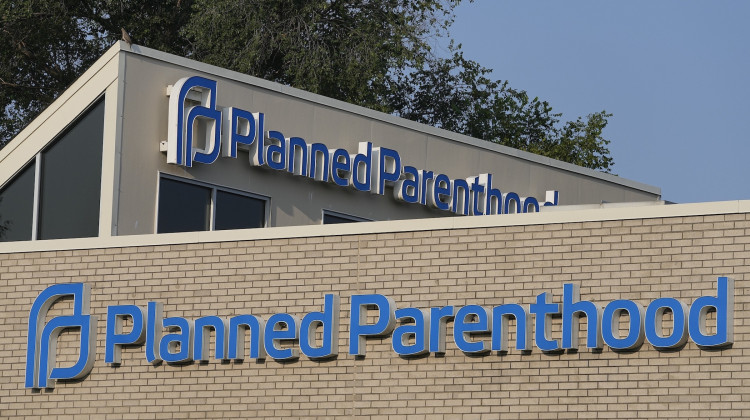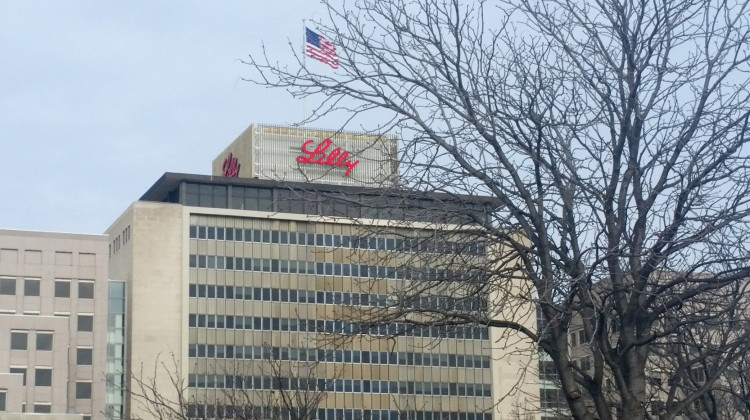CARMEL - Where you live and what ammenties are available in your community can have a direct impact on your health. This is the tale of parks investment in two cities where health outcomes are very different.
In Carmel, Indiana the newest playground is a $4 million facility in Central Park. It features, a 32-foot tower with bridges, slides, numerous climbing structures and tunnels as well as an electronic wack-a-mole and a splash pad.
Carmel mom Michelle Toles says her family takes advantage of the city’s parks systems.
“I like that Carmel has a variety in their parks,” said Toles, ”it’s not just one park over and over in different locations.”
Research shows that access to parks and greenways is linked to better health. Kim Irwin is the executive director of Health By Design a nonprofit coalition that works to promote healthier places.
“When there are trails, when there are sidewalks, when there are parks that are connected by trails, by sidewalks,” commented Irwin, “people are healthier.”
Unfortunately, the Indy metro area--which includes Carmel--has ranked the at the very bottom in a national fitness index for the last three years. The American College of Sports Medicine produces the index that measures several indicators of health. One of the measurements is investment in parks.
Irwin says for communities, that comes down to the bottom line.
“That involves making choices about budgets, what we invest in and how much we invest.” Irwin said.
Though the fitness index lumped them together, a county health breakdown from the Robert Wood Johnson Foundation finds some stark differences in health outcomes between two counties in the metro area.
Carmel is in affluent Hamilton County, which ranks first in health outcomes like life expectancy. Indianapolis is in Marion County which ranks 83rd out of 92 counties
A lot of factors go into these health differences--but parks funding may be one. In Carmel, Parks Department Director Mark Westermeier says the city has made a big investment in outdoor recreation--and has done so in an innovative way.
“Our budget has grown from about $1.8 million to $12 million today,” said Westermeir, “and only 20% of that is from tax dollars.”
The other 80 percent comes from revenue generated mainly from the $55 million Monon Community Center built in 2007. The center offers fitness classes, before and after school programs and a water park that draws users from all across the area.
“Because we’re not using tax dollars to fund our operations, those dollars can be used to create new parks, specialty programs and other things that we can use to give back to the community.” Remarked Westermeier.
The Carmel Clay Parks & Recreation Department has won numerous awards and created hundreds of jobs. The parks budget breaks down to more than 130 dollars per city resident.
In contrast, the parks budget in Indianapolis is far lower --about 35 dollars per resident. And the majority $32 million budget is taxpayer funded.
The national average is $102 per person.
Bigger budgets can lead to attractive, well-maintained parks with more features which have been shown to encourage more use overall and more active play among children.
The differences between the cities parks departments aren’t quite as extreme as those between fictional Pawnee and Eagleton in the Indiana based TV show ‘Parks & Recreation’.
In one episode, Pawnee Parks Deputy Leslie Knope comments on Eagleton’s extra departments.
“There are two Eagleton departments that Pawnee does not have. The Department of Infinity Pool Design and the Department of Dressage, which I am told is a fancy horse riding thing.” Knope said.
When asked if she can relate to Parks and Rec’s passionate Leslie Knope, Indy Parks Director Linda Broadfoot says ‘yes’, though, unlike Knope, she doesn’t hold any deep seated hatred for Carmel.
“Our partners to the north are very good friends of ours.” Commented Broadfoot.
The reality is, Indy’s park system depends on significant support from philanthropic partners, corporate investors and a parks foundation that help supplement their budget.
“We have finite resources with the city government,” said Broadfoot, “but I think we are delivering a lot for the dollars we spend at the parks department.”
Broadfoot says the department is always exploring ways to build newer and better parks... including finding ways to generate money.
“We are not alone as a department as also needing to look at additional revenue services.” Said Broadfoot.
In Carmel, the revenue is coming in every day. People like Carmel mom Michelle Toles, are frequent users of the Monon Fitness Center.
“I’ve taken classes here, my kids have taken classes here” said Toles, “we’ve used a lot of their programs.”
She is one of over half a million people that use the Monon Center every year for a healthier, more active life.
 DONATE
DONATE









 Support WFYI. We can't do it without you.
Support WFYI. We can't do it without you.